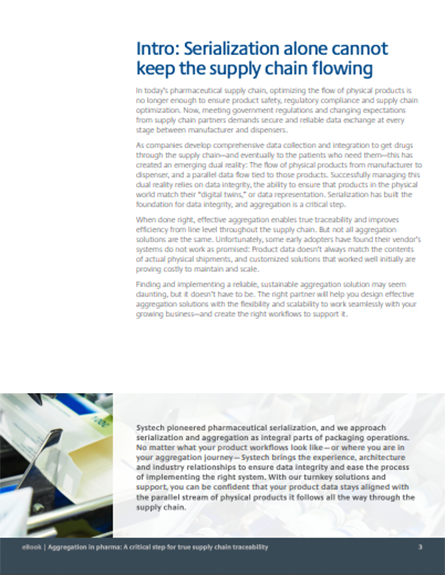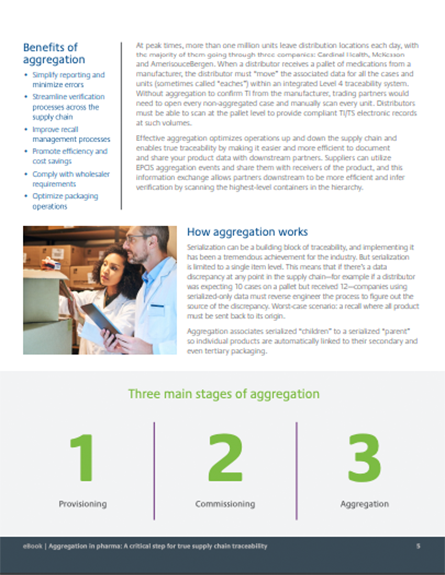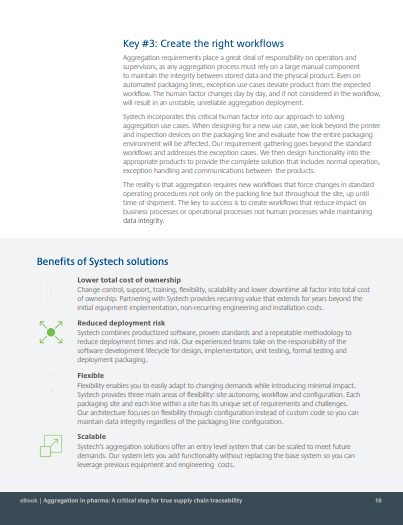In today’s pharma supply chain, optimizing the flow of physical products is essential to ensure product safety, regulatory compliance and supply chain optimization. When done right, effective aggregation delivers the necessary data along with the products to facilitate a compliant and efficient supply chain.
Best practices to select and design an effective aggregation strategy that works seamlessly with your growing business—and keeps the supply chain flowing. This includes:

.png)


Effective aggregation optimizes operations across the supply chain. It enables true traceability by making it easier and more efficient to document and share your product data with downstream partners.
A sneak peek into what you’ll learn.
Technically, it is not required anywhere. In the US to make DSCSA practical and workable, manufacturers need to aggregate products for their wholesalers and distributors. It is impossible for the wholesalers to scan every individual product at receiving.
The ability to scan one pallet barcode (SSCC) and know what cases and units are on that pallet. Once scanned, all the items “move” to their new location in the system.
You need rework capabilities to ensure—from a physical AND associated data standpoint—that the damaged case(s) are removed, new case(s) added and the pallet data is adjusted to make this change.
Incorporating “pack by layer” technology allows a layer of multiple packages to be placed in a case—one scan reads all the product barcodes and assigns them to the case.
The main benefit is making supply chain transparency and visibility much easier. Integrating with supply chain partners to scan pallets and recording movement can provide great insights when consolidated and reported on.
The rewards of investing in the right aggregation solution go far beyond compliance.